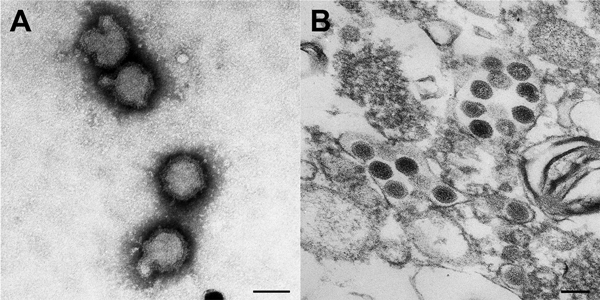Volume 20, Number 6—June 2014
Dispatch
Novel Phlebovirus with Zoonotic Potential Isolated from Ticks, Australia
Figure 1

Figure 1. Electron microscopic examination results of a newly isolated virus, tentatively named Hunter Island Group virus, isolated from ticks collected from shy albatrosses, Tasmania, AustraliaA) Negative-contrast staining of virionsB) Thin section of infected Vero cells showing the presence of viral particlesOriginal magnification ×100,000; scale bars represent 100 nm,
1These authors contributed equally to this article.
Page created: May 16, 2014
Page updated: May 16, 2014
Page reviewed: May 16, 2014
The conclusions, findings, and opinions expressed by authors contributing to this journal do not necessarily reflect the official position of the U.S. Department of Health and Human Services, the Public Health Service, the Centers for Disease Control and Prevention, or the authors' affiliated institutions. Use of trade names is for identification only and does not imply endorsement by any of the groups named above.